Focus Stacking - Stack the RAWs first, or Process the RAWS, convert to JPEGS, and stack the JPEGS Is one way better?
Dec 3, 2018 19:14:11 #
I do a ton of focus stacking close-ups and landscapes. Years ago when I started to stack, I stacked the RAW images first, then processed the single stacked image. Somehow over the years I began to process the RAW images in the stack, convert them to a JPEG for web use, and then stack the JPEGS. Obviously, being smaller files, the stacking goes really fast. Does anyone who knows more about processing than I do (I think that may be everyone) know if there is a difference in quality between the order of doing things?
In other words, which workflow is better if any.
1. Stack the RAWS, process the final result, and convert to a JPEG for web use
2. Process a RAW file, copy the recipe, paste it to the others, batch process the RAWS to a JPEG, and stack the set of JPEGs
Any thoughts. I have done it both ways and don't see much of a difference. But if there is a difference I would like to know.
All the Yellowstone images attached to this are using method #2.
In other words, which workflow is better if any.
1. Stack the RAWS, process the final result, and convert to a JPEG for web use
2. Process a RAW file, copy the recipe, paste it to the others, batch process the RAWS to a JPEG, and stack the set of JPEGs
Any thoughts. I have done it both ways and don't see much of a difference. But if there is a difference I would like to know.
All the Yellowstone images attached to this are using method #2.
Chinese Spring in Yellowstone last February
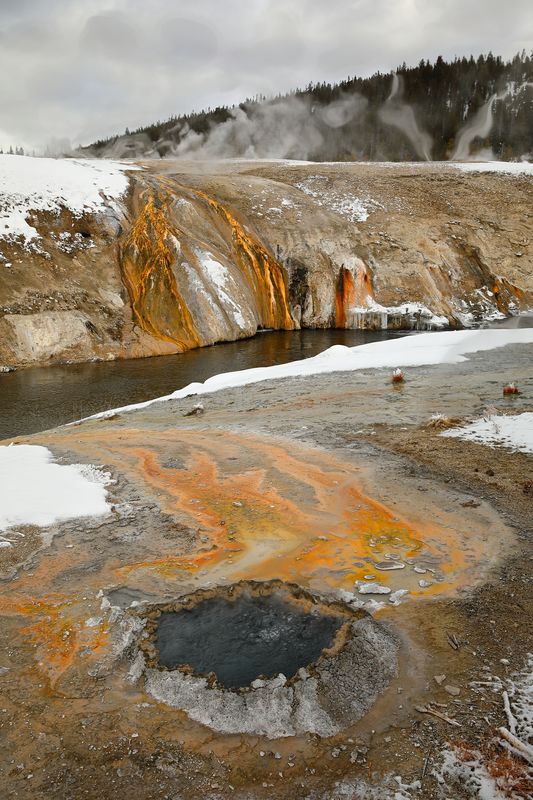
(Download)
Crested Pool - 5 shot focus stack
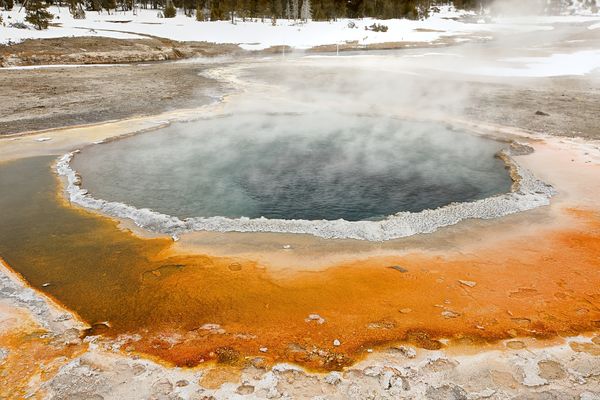
(Download)
Frosty spring - about 12 images in the stack
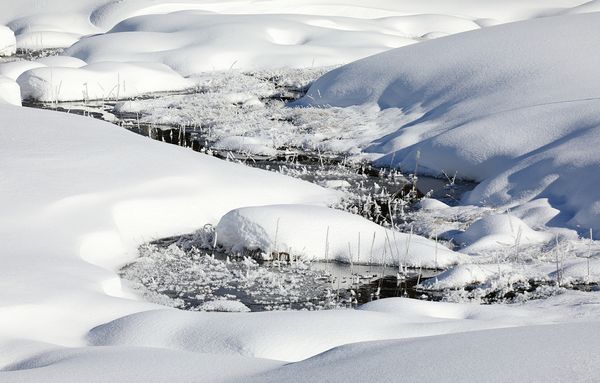
(Download)
Gibbon Falls - about 5 images stacked
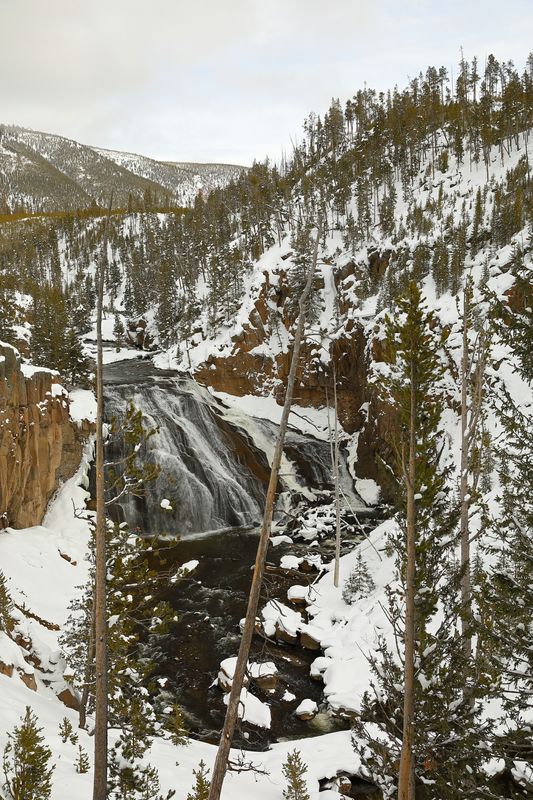
(Download)
Tangle Creek focus stack - this one really shows where a tilt and shift lens will not do it. Tilt the lens to focus the ground, and the trees go more out of focus. Stacking does all at once.
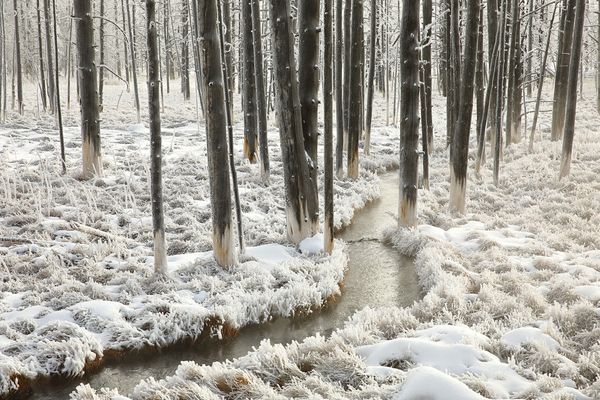
(Download)
Dec 3, 2018 19:22:04 #
I will watch the replies with interest since I also stack a bit. I always work with the RAW and convert to JPEG when I am done. Besides waiting for it to process 30-50 images gives me time to get another cup of coffee or something cold to drink.
Dec 3, 2018 19:30:14 #
Dec 3, 2018 19:36:26 #
RichardTaylor wrote:
Super set, and It is something I have never tried.
Your EM5 mark2 can stack your raw files in camera. You should try it.
Dec 3, 2018 19:39:11 #
tdekany wrote:
Your EM5 mark2 can stack your raw files in camera. You should try it.
THanks. I will.
Dec 3, 2018 19:44:09 #
Cany143
Loc: SE Utah
Genuinely nice images, stacked or not.
I expect somebody'll come on and say that there's reason for one approach over another, and they may be right, but I've always stacked straight from RAW. In my case (and I imagine it'll vary between native formats of various systems/softwares), that results in a .dng file that retains essentially the same information as a raw file, and anything I do or don't do afterward processing-wise is done on an image with as much information as possible. What I (learned by trial and error, mostly error) never to do is not to make adjustments to raw files, then stack; too many things can go south unless each of the images in my stack had been adjusted with either a preset (which I NEVER use), or the adjustment data had been copied and applied to subsequent frames. Beyond that, any image I work on subsequently stays in .tif format; I only downsample or reduce or whatever to .jpg if I plan to post it on-line or something.
I expect somebody'll come on and say that there's reason for one approach over another, and they may be right, but I've always stacked straight from RAW. In my case (and I imagine it'll vary between native formats of various systems/softwares), that results in a .dng file that retains essentially the same information as a raw file, and anything I do or don't do afterward processing-wise is done on an image with as much information as possible. What I (learned by trial and error, mostly error) never to do is not to make adjustments to raw files, then stack; too many things can go south unless each of the images in my stack had been adjusted with either a preset (which I NEVER use), or the adjustment data had been copied and applied to subsequent frames. Beyond that, any image I work on subsequently stays in .tif format; I only downsample or reduce or whatever to .jpg if I plan to post it on-line or something.
Dec 3, 2018 20:14:17 #
In answer to your question, I am not aware of any difference or preference.
You didn't say what software you are using for stacking. I use Helicon as follows:
RAWs are convert to TIFF for stacking and the stacked TIFF if returned to Lightroom,
I then do the post processing on the TIFF in Lightroom and export as a JPEG for web posting.
You didn't say what software you are using for stacking. I use Helicon as follows:
RAWs are convert to TIFF for stacking and the stacked TIFF if returned to Lightroom,
I then do the post processing on the TIFF in Lightroom and export as a JPEG for web posting.
Dec 3, 2018 20:54:01 #
I only shoot in JPEG but I still learned early on to process my files first then stack.. It only made since as noise from ISO to contrasty conditions or a handful of other conditions only worsen when stacked together. That said I only sharpened the final finished stack. Denoise, add a little contrast, lighten or darken a little, then stack, make final adjustments and sharpen. I deal mostly with macros so I do a lot of pixel peeping, it made a huge difference to me, and have applied to landscapes as well. P.S patch processing using Nik software
Dec 3, 2018 21:28:41 #
rwilson1942 wrote:
In answer to your question, I am not aware of any difference or preference.
You didn't say what software you are using for stacking. I use Helicon as follows:
RAWs are convert to TIFF for stacking and the stacked TIFF if returned to Lightroom,
I then do the post processing on the TIFF in Lightroom and export as a JPEG for web posting.
You didn't say what software you are using for stacking. I use Helicon as follows:
RAWs are convert to TIFF for stacking and the stacked TIFF if returned to Lightroom,
I then do the post processing on the TIFF in Lightroom and export as a JPEG for web posting.
I use only Canon's DPP 4.9.2. I process the RAW, paste the recipe to all the others RAWs in the stack, then convert all of them in a batch process to JPEG, and stack the JPEG. It goes really fast. I stack with Helicon Focus. My Canon software doesn't do to good with anything but a RAW canon file, so I don't want to stack the RAW first and get a result that Canon software does not like.
Dec 3, 2018 21:29:49 #
Cany143 wrote:
Genuinely nice images, stacked or not. br br I ex... (show quote)
Thanks for taking the time to reply. Always interested in hearing how others do the process.
Dec 3, 2018 22:45:47 #
John Gerlach wrote:
I use only Canon's DPP 4.9.2. I process the RAW, paste the recipe to all the others RAWs in the stack, then convert all of them in a batch process to JPEG, and stack the JPEG. It goes really fast. I stack with Helicon Focus. My Canon software doesn't do to good with anything but a RAW canon file, so I don't want to stack the RAW first and get a result that Canon software does not like.
I understand, you have to use the process that works with your software.
I was already using Lightroom before I got Helicon and started doing stacks.
Dec 3, 2018 23:10:51 #
IDguy
Loc: Idaho
Thanks for the info.
I haven’t tried focus stacking. But my Z6 comes with the ability to automate it. I’m going to try it.
Since Lightroom doesn’t accept Z6 RAW I’ll start with jpegs.
I haven’t tried focus stacking. But my Z6 comes with the ability to automate it. I’m going to try it.
Since Lightroom doesn’t accept Z6 RAW I’ll start with jpegs.
Dec 4, 2018 05:01:22 #
I have focus stacked with both my D500 & X-T2. The X-T2 will automatically move the focus point and create the photo set while with the D500, I have to do that manually, which is easy in live view. My process has been to:
1. In LR, working with the RAW files, process the first shot, then synch all the others to those settings
2. Highlight all the shots and open them into PS as layers.
3. Run the focus stacking routines
4. Final edits to image
5. Return to LR.
I have found that working with the D500 images is SIGNIFICANTLY faster (as in an order of magnitude) than with the X-T2 files even when using the same number of files. The end quality of images from either camera is similar, but the Fuji takes longer in PS to stack which is not a problem if you have a single image, set it to running and go to dinner - but if you have several images, the D500 is the one to pick (between the two I have).
I always assumed your final IQ would be better if you worked in RAW, then saved to jpg as the final step. Interested in hearing from others on this topic.
1. In LR, working with the RAW files, process the first shot, then synch all the others to those settings
2. Highlight all the shots and open them into PS as layers.
3. Run the focus stacking routines
4. Final edits to image
5. Return to LR.
I have found that working with the D500 images is SIGNIFICANTLY faster (as in an order of magnitude) than with the X-T2 files even when using the same number of files. The end quality of images from either camera is similar, but the Fuji takes longer in PS to stack which is not a problem if you have a single image, set it to running and go to dinner - but if you have several images, the D500 is the one to pick (between the two I have).
I always assumed your final IQ would be better if you worked in RAW, then saved to jpg as the final step. Interested in hearing from others on this topic.
Dec 4, 2018 07:29:59 #
While I was looking at sites about stacking, and reading different workflows, I did find a good article about stacking that compares Photoshop, Helicon, and Zerene and it is written by someone who does stacking in the lab for his work. The article describes options each program has and compares them with good high-magnification examples. Some "stackers" might be interested in it, so here is the link:
https://www.canadiannaturephotographer.com/rberdan_focus_stacking.html
https://www.canadiannaturephotographer.com/rberdan_focus_stacking.html
Dec 4, 2018 10:13:22 #
John G .., thnx for your input .. the reference article is E X C E L L E N T ..
If you want to reply, then register here. Registration is free and your account is created instantly, so you can post right away.






